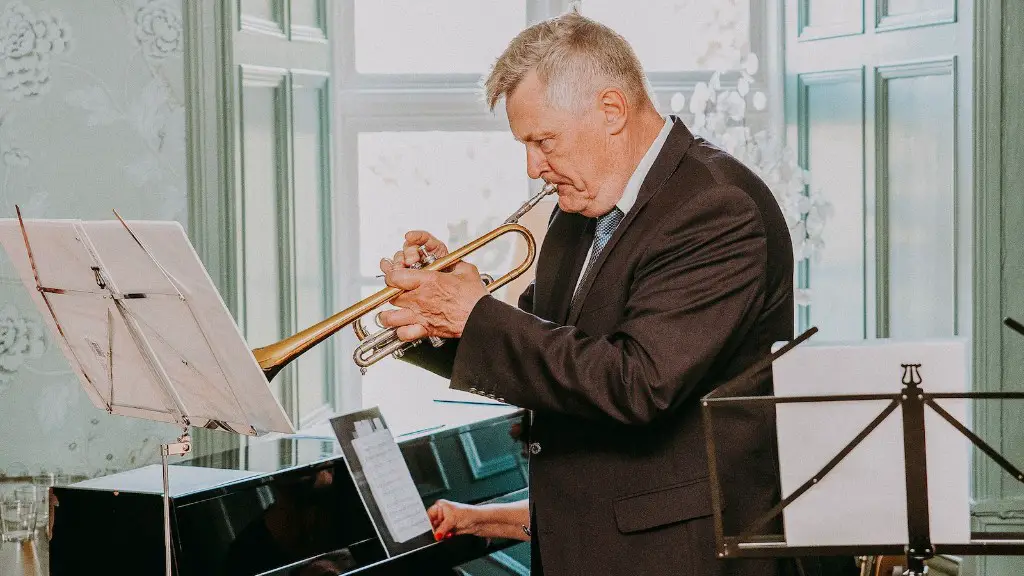A picture can be worth a thousand words, so it is important to know how to compose one. In general, there are a few things to keep in mind when composing a picture. First, the rule of thirds is a good guideline to follow. This rule suggests that an image should be divided into thirds, both horizontally and vertically, and that the important elements of the image should be placed along those lines or at the intersections. This can help create a more balanced and visually pleasing image. Second, it is often helpful to have a focal point in an image, something that will draw the viewer’s eye. This could be a person, an object, or even a certain color. Having a focal point can help to make an image more interesting and engaging. Finally, it is important to be aware of the background and foreground of an image and how they relate to the subject. The background should not be too cluttered or busy, as it can distract from the subject. The foreground can also be used to create depth and perspective in an image. By keeping these things in mind, you can compose pictures that are both visually appealing and tell a story.
There is no one “right” way to compose a picture, but there are some general guidelines that can help you create a composition that is visually appealing and balanced. Here are a few things to keep in mind when composing a picture:
– Try to avoid putting the subject of your photo in the very center of the frame. Off-center compositions are usually more interesting and visually pleasing.
– Consider the “rule of thirds” when composing your photo. This rule states that an image should be divided into thirds, both horizontally and vertically, and that the subject of the photo should be placed at one of the intersections of these lines.
– Make sure that there is some negative space in your photo. Negative space is the empty area around the subject of the photo. Including some negative space in your composition can help to create a more balanced and visually pleasing image.
– Pay attention to the background of your photo. A cluttered or busy background can distract from the subject of the photo, so try to choose a background that is simple and uncluttered.
How do you compose an image?
When taking a picture, it is important to keep in mind the different elements that can make or break a photo. One thing to keep in mind is to place points of interest on the intersections and important elements along the lines. This will help to create a more interesting and visually appealing photo. Additionally, using natural lines to lead eyes into the picture can also be quite effective. Diagonal lines, in particular, create great movement and can really add to the overall impact of the photo. Another thing to consider is using natural frames like windows and doors to help add depth and dimension to the photo. Finally, finding a contrast between the subject and the background is also key. By doing this, you can help to make your subject pop and really stand out in the photo.
A good photo composition takes practice and an understanding of the various elements that make up a strong image. The most important thing to remember is that a composition is not about perfection, but rather creating a pleasing and visually interesting image. There are a few key things to keep in mind when composing your shots:
1. Use the rule of thirds. This is a simple but effective compositional tool that can help you create more balanced and interesting images. The idea is to divide your frame into thirds, both horizontally and vertically, and then place your subject along one of those lines or at the intersection of them. This can help you avoid putting your subject dead center in the frame, which can often result in a boring or uninteresting composition.
2. Pay attention to leading lines. Leading lines are any elements in your scene that can help lead the viewer’s eye through the image. These can be things like roads, fences, rivers, or even people’s gazes. By including leading lines in your composition, you can help guide the viewer’s eye to your subject and create a more dynamic and interesting image.
3. Make use of negative space. Negative space is the empty space around and between the subjects in your frame. It’s often overlooked, but
What are the 5 rules of composition in photography
The five elements of composition in photography are:
1. Avoid too much negative space.
2. Embrace lines.
3. Obey the rule of thirds.
4. Create depth with a clear foreground, middleground, and background.
5. Use leading lines to draw the eye into the photo.
1. Use the rule of thirds to composition your shots for the best results.
2. Try to use leading lines to draw the eye into the shot.
3. Use diagonals to add interest and movement.
4. Use a frame within a frame for a more interesting composition.
5. Make sure the dominant eye is in the center of the frame.
6. Fill the frame with your subject.
7. Use the golden ratio for a more pleasing composition.
8. Keep your shots simple for the best results.
9. Use negative space to add interest.
10. Try different angles and perspectives for more interesting shots.
How do I start composing?
Compose a Song in 10 Steps
1. Listen and Analyze Everything
2. Learn an Instrument (or Two… or More)
3. Study Music Theory and Sight Reading
4. Choose a Mood and a Theme
5. Choose a Song Structure or Format
6. Start With the Melody
7. Add Other Parts
8. Arrange and Rehearse
9. Record
10. Promote Your Song
1. Listen to other composers for inspiration.
2. Learn music theory to better understand how music works.
3. Play an instrument (or a few) to get a feel for how to create melodies and harmonies.
4. Just start writing! The more you do it, the better you’ll get.
5. Write one part at a time – don’t try to do everything all at once.
6. Learn all the ins and outs of music software so you can create professional-sounding arrangements.
7. Work with a partner to bounce ideas off of and get feedback.
8. Experiment with different genres and styles to find your own unique voice.
9. Always be open to criticism and willing to learn from your mistakes.
10. Have fun! composing music should be enjoyable so make sure to keep that in mind.
What makes a good Photo composition?
A good composition is one in which every visual element has a precise role and adds something to the story. This is what makes a good composition in photography. You have to balance the amount of detail and space, highlights and shadows, colors, etc. to create a visually appealing and interesting image.
These seven principles are important for creating any work of art or design. Balance is essential for creating a sense of stability and visual appeal. Rhythm can help to create a sense of movement, interest, and excitement. Pattern can add interest and texture to a design. Emphasis can be used to draw the eye to a particular element or create a sense of drama. Contrast can help to create visual interest and excitement. Unity is important for creating a sense of cohesiveness. Movement can add a sense of motion and energy.
What are the two types of composing
Composition refers to the act of putting together a written piece, usually using Several different parts or elements. There are four common types of composition: Description, Exposition, Narration, and Argumentation.
Description is often used in fiction, to provide readers with a detailed and vivid picture of the setting, characters, or events taking place. Exposition is more factual, and is often used to explain a concept or provide information. Narration is similar to description, but tells a story or recounts events, usually in chronological order. Argumentation is used to persuade or convince the reader of a particular point of view.
Each type of composition has its own purpose and audience, and so different composition strategies must be used in order to effectively communicate.
The golden ratio is a guide to where to place a subject (a tree, person, building, etc) or element in a photo (like the horizon) where it will be most pleasing to the eye That divine ratio is 1618:1 The first recorded definition of the golden ratio came from Euclid in the 3rd Century BC.
What are the 9 Photo composition tips?
The picture should be composed according to the “Rule of Thirds” – the main object should be placed on one of the imaginary lines that divides the image into thirds, both horizontally and vertically.
The second important thing is the “Golden Ratio” – the size and position of the main object should be in proportion to the size of the picture as a whole.
The background should be simple and clean, without any distracting elements.
The main subject should be framed – for example, by a window or door.
If there are leading lines in the picture, they should be straight and horizontal.
The horizon should be level.
The main subject should be placed in the center of the frame.
A successful composition must include a focal point, structure, and balance. The focal point is the main subject or object that you want to focus on in the composition. The structure refers to the overall organization of the composition, including the placement of the focal point and the other elements in the composition. Balance refers to the overall design of the composition and how the elements are arranged in relation to each other.
What is the 2 second rule in photography
The Rule of Thirds is a simple guideline that can help you take more interesting and engaging photos. The idea is to mentally divide your frame into thirds, both horizontally and vertically, and to place your subject at the intersection of those lines. This can help create more visual interest and a more dynamic composition. So next time you’re framing up a shot, take a moment to think about the Rule of Thirds and see how you can use it to create a stronger image.
1. Composition is all about focus and attention. You need to be able to balance your photo and make sure the viewer’s attention is drawn to the right place.
2.Layout and arrangement are important. You want to make sure your photo is pleasing to the eye and easy to understand.
3. Use contrast to make your subject stand out. This can be done with color, light, or even subject matter.
4.Framing is a great way to make your subject stand out. You can use natural frames like doorways or windows, or you can create a frame within your photo with other elements.
5. Blurring the background can also help to focus the viewer’s attention on your subject.
6. Pay attention to details! This is what will really make your photo stand out.
7. The rule of thirds is a great composition tool. Simply divide your photo into thirds, both horizontally and vertically, and place your subject at the intersections or along the lines.
8. Crop and clip! Don’t be afraid to crop out unwanted elements or to clip your photo to a certain area. This can help to create a more focused and interesting photo.
9. Get creative!
What are the 7 elements of photography?
The seven basic elements of photographic art are:
Line: A line is the path of a moving point and can be used to create a variety of effects in a photograph. For example, lines can be used to create a sense of movement or rhythm, or to direct the viewer’s eye to a particular area of the image.
Shape: A shape is a two-dimensional area that is defined by its boundaries. Shapes can be geometric or organic, and can be used to create a variety of effects in a photograph. For example, shapes can be used to create a sense of balance or harmony, or to emphasize a particular area of the image.
Form: A form is a three-dimensional object that has volume and mass. Forms can be either geometric or organic, and can be used to create a variety of effects in a photograph. For example, forms can be used to create a sense of scale or depth, or to emphasize a particular area of the image.
Texture: Texture is the surface quality of an object. It can be smooth or rough, hard or soft, and can be used to create a variety of effects in a photograph. For example, texture can be used to create a sense of movement or depth,
Composing takes a lot of hard work. In fact, you have to have some serious intestinal fortitude to make it through. But the payoff is great at the end. Discipline will also allow you to write a lot of music, which is a key ingredient to becoming a better composer.
Why is composing difficult
There is a lot to learn when it comes to composition, and it can be overwhelming at times. However, it’s important to remember that everything is connected. For instance, in order to harmonize a melody, you need to understand how harmony works. By understanding the different concepts and how they work together, you’ll be able to compose music more easily.
There are no formal training or education requirements for composers, but many find that self-improvement is essential for their success. Each composer develops their own methods and education, which can be highly individual. However, most composers agree that training and education are important for becoming a successful composer.
Warp Up
1. Find your subject matter and position yourself accordingly. You can use a tripod if you need to, but try to avoid moving around too much once you’ve found your angle.
2. Get your exposure and focus right. If you’re using a DSLR camera, make sure the shutter speed is fast enough to avoid camera shake, and use manual focus if necessary.
3. Frame your shot. When you look through the viewfinder or LCD screen, imagine a frame around your subject. Try to fill the frame with your subject, and avoid including anything unnecessary in the background or foreground.
4. Compose your shot using the rule of thirds. This is a helpful guide for placing your subject matter within the frame. Imagine a grid of nine squares, with your subject placed at the intersections or along the lines. This will help create a more visually appealing and balanced composition.
5. Take the picture! Once you’re happy with the composition of your shot, go ahead and press the shutter button.
In conclusion, when composing a picture, it is important to keep the following things in mind: the Rule of Thirds, leading lines, and balance. By keeping these three things in mind, you will be well on your way to taking beautiful, eye-catching photographs.



